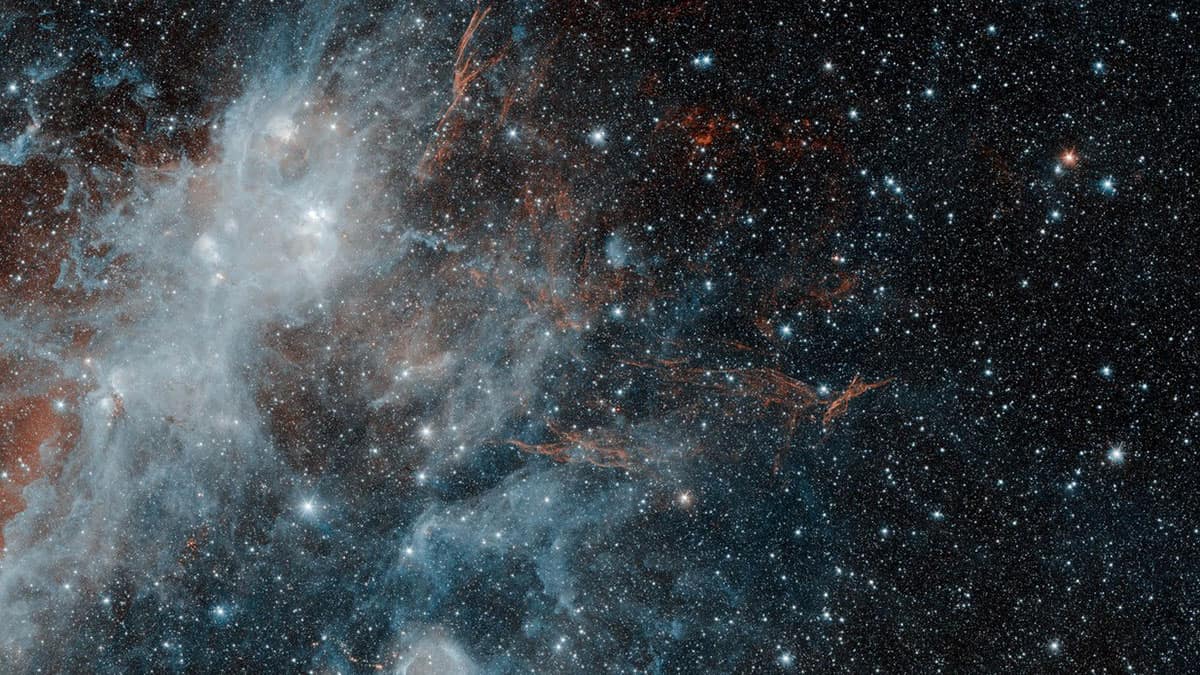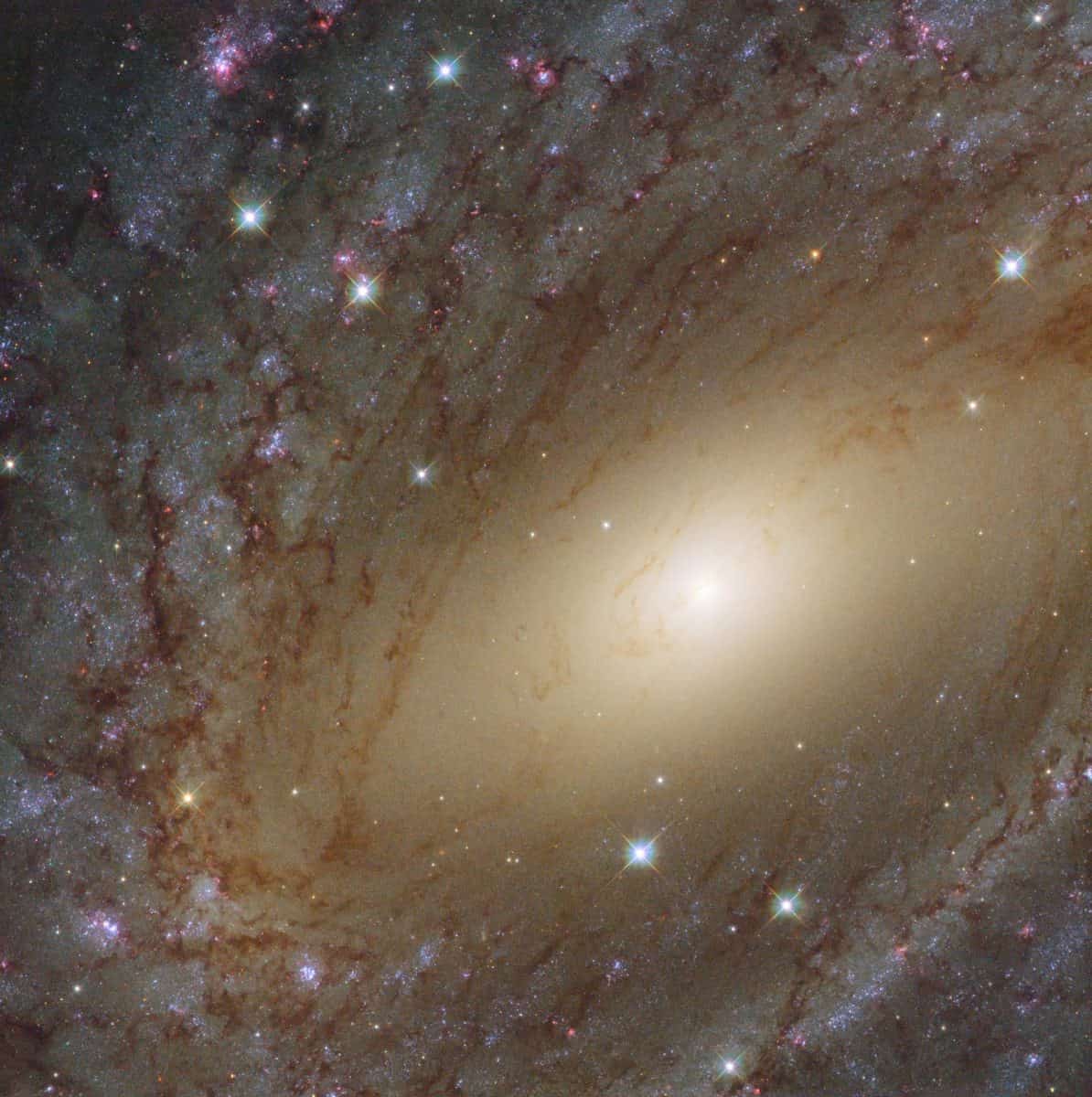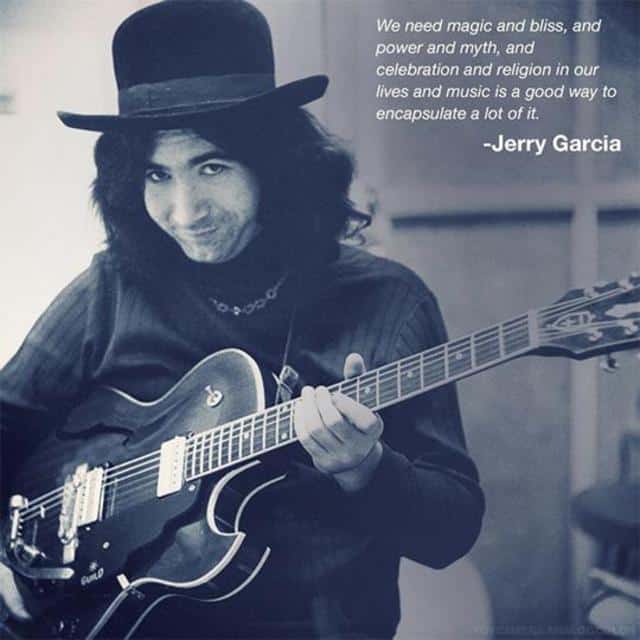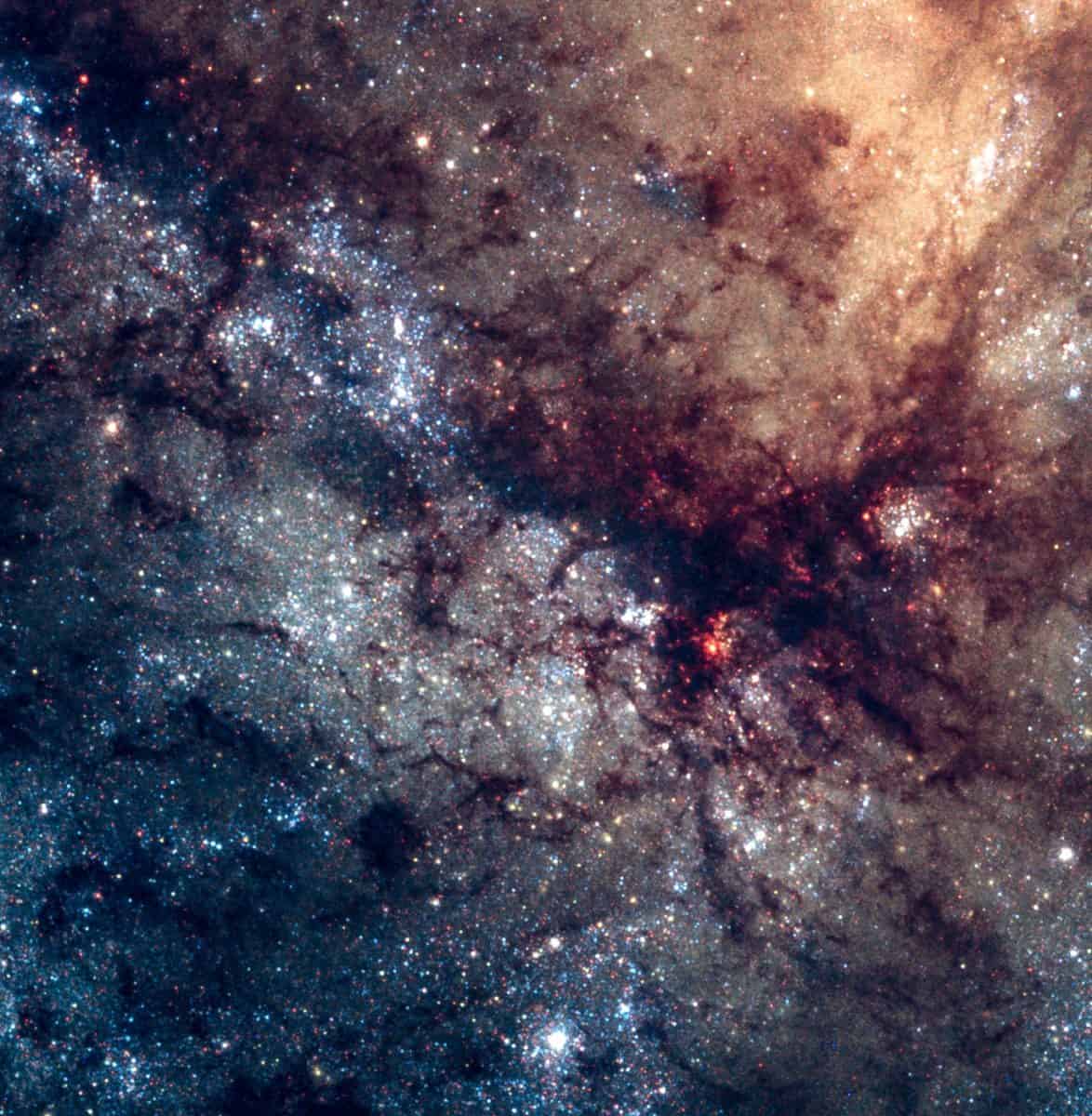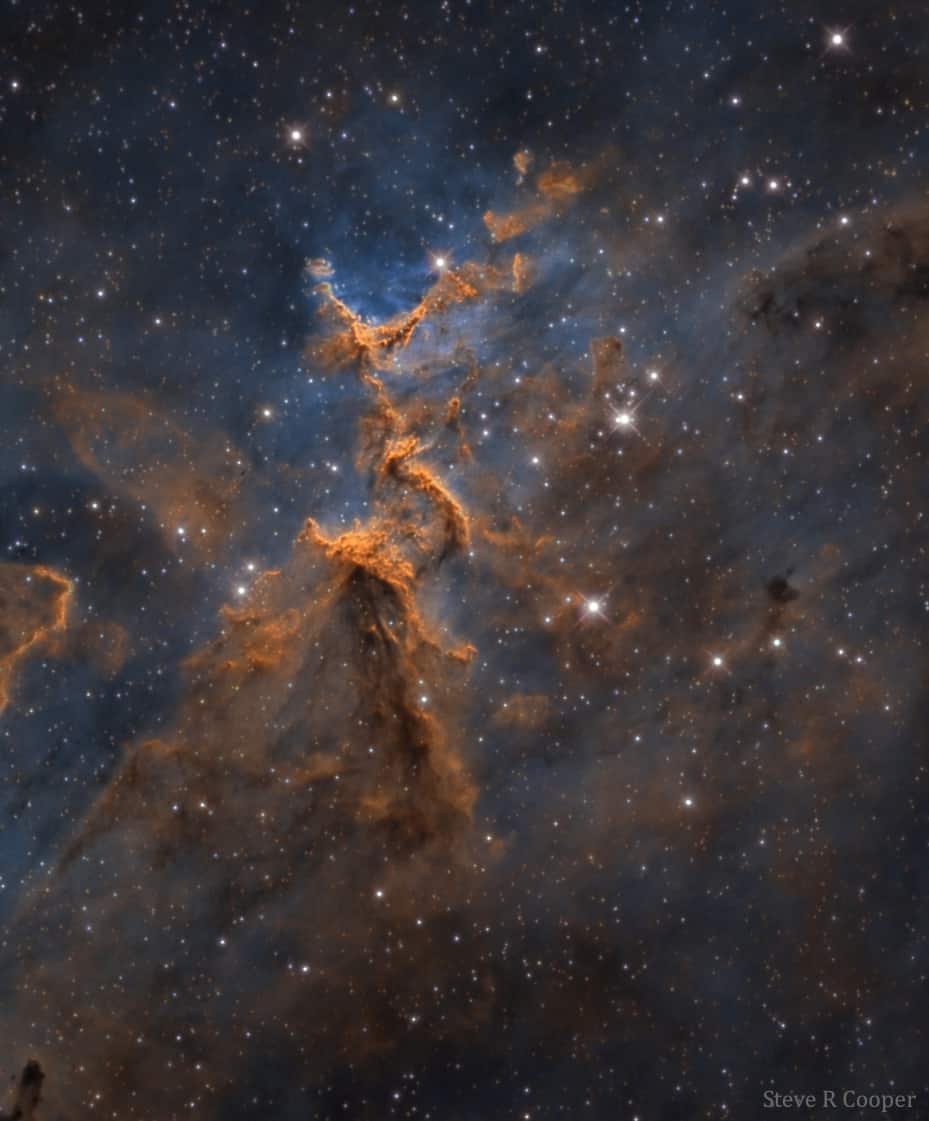Blog
Thin, red veins of energized gas mark the location of one of the larger supernova remnants in the Milky Way galaxy in this image from NASA’s Spitzer Space Telescope.
A supernova “remnant” refers to the collective, leftover signs of an exploded star, or supernova. The red filaments in this image belong to a supernova remnant known as HBH 3 that was first observed in 1966 using radio telescopes. Traces of the remnant also radiate optical light. The branches of glowing material are most likely molecular gas that was pummeled by a shockwave generated by the supernova. The energy from the explosion energized the molecules and caused them to radiate infrared light.
The white, cloud-like formation also visible in the image is part of a complex of star-forming regions, simply named W3, W4 and W5. However, those regions extend far beyond the edge of this image. Both the white star-forming regions and the red filaments are approximately 6,400 light years away and lie inside our Milky Way galaxy.
HBH 3 is about 150 light-years in diameter, ranking it amongst the largest known supernova remnants. It is also possibly one of the oldest: Astronomers estimate the original explosion may have happened anywhere from 80,000 to one million years ago.
In 2016, NASA’s Fermi Gamma-Ray Telescope detected very high-energy light — called gamma rays — coming from the region near HBH 3. This emission may be coming from gas in one of the neighboring star-forming regions, excited by powerful particles emitted by the supernova blast.
more...Roscoe Mitchell (born August 3, 1940) is an American composer, jazz instrumentalist, and educator, known for being “a technically superb – if idiosyncratic – saxophonist”. The Penguin Guide to Jazz described him as “one of the key figures” in avant-garde jazz; All About Jazz states that he has been “at the forefront of modern music” for the past 35 years. Critic Jon Pareles in The New York Times has mentioned that Mitchell “qualifies as an iconoclast”. In addition to his own work as a bandleader, Mitchell is known for cofounding the Art Ensemble of Chicago and the Association for the Advancement of Creative Musicians (AACM).
Mitchell was born in Chicago, Illinois. He also grew up in the Chicago area, where he played saxophone and clarinet at around age twelve. His family was always involved in music with many different styles playing in the house when he was a child as well as having a secular music background. His brother, Norman, in particular was the one who introduced Mitchell to jazz. While attending Englewood High School in Chicago, he furthered his study of the clarinet.
https://www.youtube.com/watch?v=perVFDDy_xg
more...Charles James Shavers (August 3, 1920 – July 8, 1971) was an American swing era jazz trumpeter who played with Dizzy Gillespie, Roy Eldridge, Johnny Dodds, Jimmie Noone, Sidney Bechet, Midge Williams, and Billie Holiday. He was an arranger and composer, and one of his compositions, “Undecided“, is a jazz standard.[2]
Charlie Shavers’ father (a distant relative of Fats Navarro) was from the prominent Shavers family of Key West, Florida, and Charlie was a cousin of heavyweight boxer Earnie Shavers. Born in New York City, he took up piano and banjo before switching to trumpet.
more...Eddie Jefferson (August 3, 1918 – May 9, 1979) was a jazz vocalist and lyricist. He is credited as an innovator of vocalese, a musical style in which lyrics are set to an instrumental composition or solo. Jefferson himself claims that his main influence was Leo Watson. Perhaps his best-known song is “Moody’s Mood for Love“, though it was first recorded by King Pleasure, who cited Jefferson as an influence. Jefferson’s songs “Parker’s Mood” and “Filthy McNasty” were also hits.
Jefferson was born in Pittsburgh, Pennsylvania. One of his most notable recordings, “So What“, combined the lyrics of artist Christopher Acemandese Hall with the music of Miles Davis to highlight his skills, and enabled him to turn a phrase, into his style he calls jazz vocalese.
https://www.youtube.com/watch?v=ecYDByed7z8
more...World Music on Flamenco Fridays with Paco de Lucia and Ricardo Modrego
Ricardo Modrego (19 October 1934 – 17 January 2017) was a Spanish flamenco guitarist from Madrid. He was the brother of Spanish-Flamenco dancer Nana Lorca. They both started their careers in Madrid in the early 1950s.
By 1953 the well known brother and sister were under contract to tour South America with Spanish dancer Hurtado de Cordoba. In October 1954 the Cordoba Company debut at the 48th Street Theatre in New York to good reviews and poor ticket sales. The four-week contract played out for only two weeks. The brother and sister team found temporary work in the US but soon returned to Spain. In Madrid they auditioned for Pilar Lopez and joined her company touring in Spain and internationally. Ricardo recorded three albums with a young Paco de Lucia, his first albums, Dos guitarras flamencas (1964), 12 canciones de García Lorca para guitarra and 12 éxitos para 2 guitarras flamencas (1965). In between the records the brother and sister team toured with the Jose Greco Spanish Dance Company. Nana later married Jose Greco and both Greco’s toured the world as famous Spanish-Flamenco dancers. Ricardo also toured with Mariemma and Antonio Ruiz, he joined the Greco’s on tour from time to time. Jose and Nana had one son Paolo Greco, a film music composer. The Greco’s divorced leaving both Nana Lorca and Paolo Greco to live in Madrid.
more...NGC 6744 is situated in the constellation of Pavo at a distance of about 25 million light-years.
It was discovered in June 1826 by the British astronomer James Dunlop.
At first glance, it resembles our Milky Way Galaxy albeit larger, measuring more than 200,000 light-years across compared to 100,000 light-year diameter for our Galaxy.
NGC 6744 is similar to the Milky Way in more ways than one.
Like our home Galaxy, it has a prominent central region packed with old yellow stars.
Moving away from NGC 6744’s galactic core, we can see parts of the dusty spiral arms painted in shades of pink and blue.
While the blue sites are full of young star clusters, the pink ones are regions of active star formation, indicating that the galaxy is still very lively.
In 2005, a supernova — named SN 2005at — was discovered within NGC 6744, adding to the argument of this galaxy’s liveliness.
SN 2005at is a type Ic supernova, formed when a massive star collapses in itself and loses its hydrogen envelope.
This image of NGC 6744 was taken by Hubble’s Wide Field Camera 3 (WFC3) as part of the Legacy ExtraGalactic UV Survey (LEGUS), the most comprehensive ultraviolet-light survey of nearby star-forming galaxies.
This survey will help astronomers interpret views of galaxies in the distant Universe, where the ultraviolet glow from young stars is stretched to infrared wavelengths due to the expansion of space.
Juvenal de Holanda Vasconcelos, known as Naná Vasconcelos (2 August 1944 – 9 March 2016), was a Brazilian percussionist, vocalist and berimbau player, notable for his work as a solo artist on over two dozen albums, and as a backing musician with Pat Metheny, Don Cherry, Jan Garbarek, Egberto Gismonti, Gato Barbieri, and Milton Nascimento.
more...Carl Saunders (born August 2, 1942) is a jazz trumpeter, composer, and educator who has worked with Stan Kenton, Buddy Rich, Bill Holman, and Clare Fischer, in addition to Frank Sinatra, Ella Fitzgerald, Mel Tormé, and Paul Anka.
Born in Indianapolis, Indiana, his first five years were mostly spent on the road. His uncle was trumpeter Bobby Sherwood, who was led the popular Sherwood Orchestra, having hits with “Elks Parade” and “Sherwood’s Forest.” Saunders’s mother Gail (Bobby’s sister) sang for the Sherwood Orchestra and Stan Kenton. When Saunders was five, he and his mother settled in Los Angeles, living with his aunt Caroline and her husband, saxophonist Dave Pell. He heard the records of the Dave Pell Octet and was influenced by the style and phrasing of trumpeter Don Fagerquist.
more...Faenza Codex instrumental music of the 15th c with Ensemble Unicorn & Michael Posch
https://www.youtube.com/watch?v=t-TxpEeE4qs
more...Bright stars and colorful nebulas glow in one of the galactic arms of Messier 66, an intermediate spiral galaxy located 36 million light-years away in the constellation Leo. Also known as NGC 3627, this galaxy’s structure is somewhere between a barred and unbarred spiral galaxy. Citizen scientist Kevin Gill processed this image using data from the Hubble Space Telescope.
more...Robert William Cray (born August 1, 1953) is an American blues guitarist and singer. He has led his own band and won five Grammy Awards.
One music journalist noted “If you define ‘blues’ by the rigid categories of structure rather than the flexible language of feeling allusion, Robert Cray… Larry Garner, Joe Louis Walker and James Armstrong are a new and uncategorizable breed, their music blues-like rather than blues, each of them blending ideas and devices from a variety of sources – soul, rock, jazz, gospel – with a sophistication beyond the reach of their forerunners”.
Robert Cray was born on August 1, 1953, in Columbus, Georgia, while his father was stationed at Fort Benning. Cray’s musical beginnings go back to when he was a student at Denbigh High School in Newport News, Virginia. While there, he played in his first band, The One-Way Street. His family eventually settled in the Tacoma, Washington, area. There, he attended Lakes High School in Lakewood, Washington.
more...Jerome John Garcia (August 1, 1942 – August 9, 1995) was an American singer-songwriter and guitarist, best known for his work as the lead guitarist and as a vocalist with the band Grateful Dead, which came to prominence during the counterculture era in the 1960s. Although he disavowed the role, Garcia was viewed by many as the leader or “spokesman” of the group.
One of its founders, Garcia performed with the Grateful Dead for their entire thirty-year career (1965–1995). Garcia also founded and participated in a variety of side projects, including the Saunders–Garcia Band (with longtime friend Merl Saunders), the Jerry Garcia Band, Old and in the Way, the Garcia/Grisman acoustic duo, Legion of Mary, and the New Riders of the Purple Sage (which Garcia co-founded with John Dawson and David Nelson). He also released several solo albums, and contributed to a number of albums by other artists over the years as a session musician. He was well known for his distinctive guitar playing and was ranked 13th in Rolling Stone‘s “100 Greatest Guitarists of All Time” cover story.
Later in life, Garcia was sometimes ill because of his diabetes, and in 1986, he went into a diabetic coma that nearly cost him his life. Although his overall health improved somewhat after that, he continued to struggle with obesity, smoking, and longstanding heroin and cocaine addictions. He was staying in a California drug rehabilitation facility when he died of a heart attack in August 1995 at the age of 53.
Jerry Garcia’s ancestors on his father’s side were from Galicia in northwest Spain. His mother’s ancestors were Irish and Swedish. He was born in the Excelsior District of San Francisco, California, on August 1, 1942, to Jose Ramon “Joe” Garcia and Ruth Marie “Bobbie” (née Clifford) Garcia, who was herself born in San Francisco.
more...Cosmic clouds form fantastic shapes in the central regions of emission nebula IC 1805. The clouds are sculpted by stellar winds and radiation from massive hot stars in the nebula’s newborn star cluster,Melotte 15. About 1.5 million years young, the cluster stars are scattered in this colorful skyscape, along with dark dust clouds in silhouette against glowing atomic gas. A composite of narrowband and broadband telescopic images, the view spans about 15 light-years and includes emission from ionized hydrogen, sulfur, and oxygen atoms mapped to green, red, and blue hues in the popular Hubble Palette. Wider field images reveal that IC 1805’s simpler, overall outline suggests its popular name – The Heart Nebula. IC 1805 is located about 7,500 light years away toward the boastful constellation Cassiopeia.
more...Stanley Jordan (born July 31, 1959) is an American jazz guitarist whose technique involves tapping his fingers on the fretboard of the guitar with both hands.
Jordan was born in Chicago, Illinois. When he was six, he started on piano, then at eleven switched to guitar. He later began playing in rock and soul bands. In 1976, he won an award at the Reno Jazz Festival. At Princeton University, he studied music theory and composition with Milton Babbitt and computer music with Paul Lansky.[2][3] While at Princeton he played with Benny Carter and Dizzy Gillespie.
In 1985, Bruce Lundvall became president of Blue Note Records and Stanley Jordan was the first person he signed. Blue Note released his album Magic Touch, which sat at No.1 on Billboard ‘s jazz chart for 51 weeks, setting a record.
more...More Posts
- Daily Roots Glen Brown & King Tubby
- Rhythm Roots Workshops “BONGO ZERO” performance at Ebenezer Tower
- Cosmos M104
- Leonard Bernstein
- Pat Martino
- Wayne Shorter
- World Drumming Babatunde Olatunji
- Flamenco Fridays Jośe Montoya Carpio y Juan Diego de Luis
- Daily Roots Horace Andy
- Cosmos NGC 6946
- John Cipollina
- Claude Hopkins
- Arthur “Big Boy” Crudup
- World Fusion Béla Fleck, Zakir Hussain, Edgar Meyer featuring Rakesh Chaurasia
- Daily Roots Inner Circle & The Fatman Riddim Section
- Rhythm Roots Workshop @ Memory Café Jewish Family and Children’s Service
- Cosmos Comet Swift-Tuttle
- Keith Moon
- Terje Rypdal
- Malvina Reynolds
